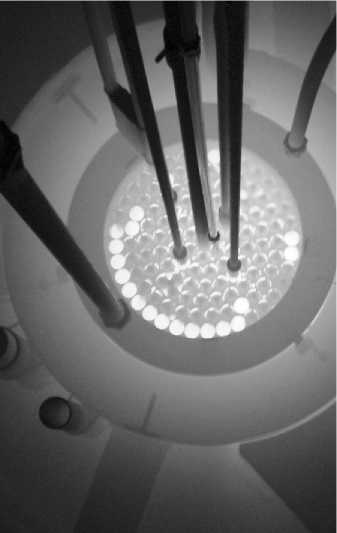Neutrons were discovered in 1932, and within 4 years the basic principles of neutron activation analysis had been established by the work of Georg von Hevesy and Hilde Levi at the Niels Bohr Institute for Theoretical Physics in Copenhagen, using a radium-beryllium source for neutrons and an early Geiger-counter assembled by Levi. However, neutron activation analysis only became practical as a method for elemental determination in the mid-1960s, with the availability of high-intensity neutron sources provided by research reactors (Figure 1), and with the development of high-resolution g-ray detectors that enabled the analysis of complex g-spectra.
During the 1970s, INAA rapidly emerged as the preferred technique for trace-element characterization, owing to its accuracy and sensitivity, and to number of elements that can be identified simultaneously (Table 1). INAA remains competitive with more recent instrumental techniques of multielement analysis (including ICP-MS), and is considered superior in the analysis of certain suites of elements, such as the rare earth or lanthanide elements. The technique helped establish the foundations of modern geochemistry, and INAA continues to make a major contribution through its application in a broad range of fields, especially geology, the environmental sciences, biology, chemical engineering, and medical research.
Over the past three decades, INAA has become a major analytical tool in archaeology, as well. The technique was first applied in provenance studies of ceramics by researchers at Brookhaven National Lab and at Oxford in the late 1950s, although these early efforts were frustrated by the poor-resolution detectors available at the time, which were unable to distinguish closely spaced g-peaks. By the mid-1960s, however, the development of lithium-drifted germanium (Ge-Li) g-ray detectors had significantly improved detector resolution and paved the way for successful analyses of obsidian in Europe and North America. These early studies established both the provenance

Figure 1 The core of a research reactor provides a high-intensity source of neutrons to activate samples. Irradiation facilities may be located directly in-core or in locations surrounding the core.
Hypothesis (which holds that each raw-material source carries a unique combination of trace elements as a chemical signature or fingerprint) and the importance of INAA as a method for sensitive, multielement analysis of artifact composition.
INAA is now routinely employed by archaeologists in materials science and provenance investigations of lithic, ceramic, metal, glass, and organic artifacts. The primary application remains that of provenance studies, in which archaeologists utilize INAA to ‘source’ artifacts based on their characteristic trace-element composition; once finished artifacts have been linked in their geographic point of origin, mechanisms of trade and exchange, political geography, and social controls over the circulation of goods can be modeled based on the distribution of artifacts from that source. Other applications of elemental analysis include authentication (verifying the antiquity of an artifact based on its trace-element composition), explorations of ancient technology (utilizing trace-element composition to infer technological processes, particularly those of metallurgy and the production of glass), and investigations of health and diet (examining consumption patterns and nutritional status of prehistoric populations from bone chemistry) (see Trace Element Analysis).




 World History
World History









